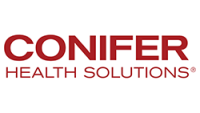Empowering patient access teams: The transformative impact of training and development
Hospital patient access teams are often the first encounter a patient has with the hospital.
The patient access encounter sets the stage for the entire patient experience and has financial implications as well. Effective registration, eligibility verification, coverage discovery and collection workflows are required for optimal revenue cycle outcomes. Training and development have a big impact on building an optimally performing patient access team.
Patient access challenges
Now that the COVID-19 pandemic is past, volumes have returned to normal or even increased in some facilities, putting greater demands on patient access teams and increased emphasis on the patient experience. For example, when calls from patients wanting to schedule appointments are not answered promptly, abandonment rates can rise, as can patient frustration. This can damage the hospital’s brand reputation and negatively impact revenue. Getting patients on the schedule should be one of the easiest of all revenue-related processes.
Keeping up with continuous payer changes and more complex payer requirements is another challenge patient access teams face. Between March 2020 and March 2022, there were more than 100,000 changes to payer requirements, according to Experian. Effectively capturing accurate demographic and insurance information during the patient access process is vital for appropriate coding and the processing of claims.
In addition to understanding payer requirements, teams must be able to clearly explain payer requirements such as deductibles, co-pays and prior authorizations to patients in a way that is easy for them to understand. Today’s high-deductible health plans can be complicated for patients to navigate, especially regarding their financial responsibility. Collecting the total amount due depends on the patient access professional’s ability to communicate clearly to patients.
The importance of training and education
Hospitals must invest in high-quality, ongoing training and education for their patient access teams to mitigate the impact of today’s patient access challenges and ensure a positive patient experience. While often used interchangeably, training and education are nuanced terms. According to the National Library of Medicine, “Training often refers to the standardization of a process to yield similar results. Education refers to the process by which people learn to apply solutions to problems and adapt to new situations.” In other words, teams must learn not only their job responsibilities and workflows but also how to apply knowledge in a variety of situations to optimize results.
Appropriate training and education can be transformational in the following ways:
- Increases time management and prioritization skills for improved productivity
- Ensures staff are knowledgeable about on complex payer requirements, policies and procedures for improved patient understanding and more effective collections
- Improves coding quality and reduces rejections, denials, and write-offs
- Streamlines cross-departmental communication and collaboration
- Enhances the patient experience
- Improves the hospital’s brand reputation
Essential elements of an optimal training and education program
There are a number of elements every patient access training and education program should include. Each plays a crucial role in building an optimally performing team. They include the following:
- Recruiting a skilled staff, giving priority to internal candidates who are already familiar with the system and the hospital’s culture
- Emphasis on creating a culture of patient advocacy and service
- Patient access best practices for scheduling, eligibility verification, coverage discovery, and patient collections
- Role-specific education and assessments
- Financial counseling training
- Problem-solving skills
- Soft skills for improved patient communication and cross-departmental collaboration
- Self-led training through continuing education and on-demand e-learning opportunities
- Train-the-trainer approach for more timely, on-the-job educational opportunities
- Incentives for quality performance
Measuring the impact of training and education
To accurately measure the impact of patient access training and education, hospitals must first ensure they have implemented standard procedures. These standards should be the foundation of training and education across all patient access functions. Once standardized processes are in place, hospitals should implement the following:
- Key performance indicators for six domains as laid out by the National Association of Healthcare Access Management (NAHAM): Collections, patient experience, critical processes, productivity, accuracy and transparency
- Staff feedback mechanisms for continuous improvement
- Pre- and post-training analytics for comparative performance metrics
Striving for patient access excellence
Many hospitals still struggle with staffing shortages, making implementing a new training and education program challenging. However, focusing solely on onboarding training could lead to systemic productivity and quality issues and may impact patient satisfaction and revenue. Investing the time and resources necessary to implement and maintain a highly effective training and education program can bring significant returns, both near-term and long-term. For hospitals and health systems that lack the resources to do so, strategic partnerships can help.
The best outsourcers are those that have curated highly skilled patient access teams through rigorous training and ongoing education programs. Because they have the ability to recruit and hire at scale, they are also able to select the most experienced candidates. With strategic outsourcing partnerships, providers can experience all the benefits of a well-seasoned team of patient access professionals, as well as well-honed patient access processes, while supporting existing staff.






